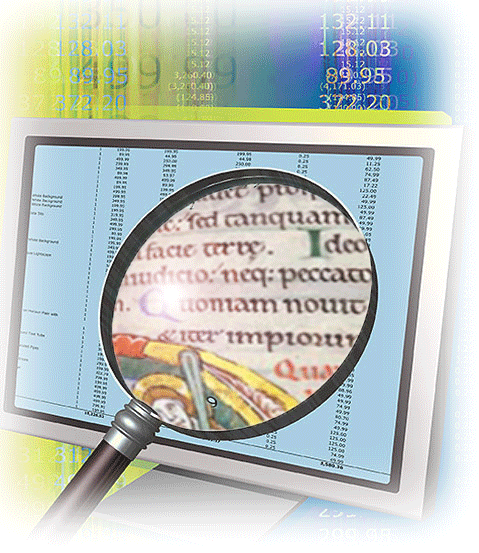
The discussions on this website revolve around explorations of how we can derive meaning from medieval texts by examining how they were written and read. We started our project with many questions, and many questions still remain or can be answered only with "It depends�."
The two manuscripts under scrutiny are the magnificently illuminated twelfth-century St. Albans Psalter and the more homely fourteenth-century Auchinleck Manuscript. One is a liturgical, devotional work; the other contains a variety of poems and stories for entertainment, historical interest, as well as doctrinal instruction. Since both manuscripts are compilations of a great deal of material, this site focuses on certain aspects of these collections, as follows:
The Auchinleck Manuscript and The St Albans Psalter: A Study of Materiality focuses on the physical properties of these works: what they were made of, and how they were produced. This essay discusses their origins as medieval texts. Both come from a time when a tradition of orality was transitioning to a culture of the printed word. For the medieval reader, texts had a physical resonance; spaces and scribal markings (colors, lettering, and spatial placement, for example) were part of the process of reading. We explore these texts as tactile and visual experiences as well as how they were conceived and brought to life.
Speculations on Medieval Reading of The St Albans Psalter and Sir Orfeo discusses how medieval people might have read these works. Did we say "read"? Private silent reading, as we have today, was not the norm. It is easy for us to underestimate the medieval preference for reading as a social event. A better question is, "How did people experience these two texts?" Medieval practice varied and included public readings of written texts (that is, reading manuscripts aloud in a group), a "reading by seeing" through contemplating the illustrations, and, to a lesser extent, voiced and silent private reading.
From Orpheus to Sir Orfeo: The Anglicization of a Myth looks at the implications of how one culture adopts and incorporates a myth from another culture. In this case, we explore how the Greek and Roman Orpheus becomes the Anglicized king, Sir Orfeo, who travels to the Celtic Fairy otherworld rather than the Hellenic underworld to find his lost beloved wife. What does this Breton lay tell us about medieval English society?
Erin Lanagan, Rebecca Lawson, and Jane Minogue are responsible for the contents of this website,
with full rights reserved.
No one may quote or use the ideas stated herein without proper attribution.
This website was created expressly for the English 630ML: The Technology of Textuality class,
taught at California State University, Northridge (Click here
for information on the class.).